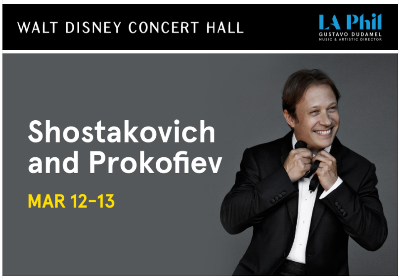Best known as the successful former Music Director of the Seattle Symphony, French conductor Ludovic Morlot led one of Shostakovich’s greatest symphonies last week, depicting the despair in his Tenth with an uplifting mournful passion. The opening movement can feel ponderous in the wron g hands, but here it exuded constant momentum. Even with a broad tempo, Morlot was concentrating on the musical strusture, gradually building phrases and — something Dudamel does best — underscoring relationships between sections. While the Tenth Symphony is a brooding, deeply personal, riveting portrait of Stalin’s regime, it ends in a musical triumph. It was first performed in December 1953 following Stalin’s death earlier that year, although Shostakovich had been working on much of the material incorporated in the symphony for many years. The great Russian soprano Galina Vishnevskaya claimed that the symphony was “a composer’s testament of misery, forever damning a tyrant.” As such, Morlot and his orchestra were heard at their best in the two final movements. The mysterious Allegretto third movement with its Mahlerian horn calls building to a magnificent whirlwind climax and Gergiev beautifully creates the bleak atmosphere of the finale’s opening with its desolate oboe solo.
Sergio Tiempo is the real deal. When a pianist can take a work as familiar as Prokofiev’s First Piano Concerto and turn it into an exciting Olympic event, I’m more than sold. Appearing at Disney Hall (where the crowds are thankfully returning after the shutdown), the very cool, jovial and ridiculously youthful Venezuelan was down to some serious business, but was never out to impress. The fluidity and accuracy of his playing were astounding, and the shape of the overall performance excellent.
Los Angeles PhilharmonicLudovic Morlot, conductorSergio Tiempo, pianoreviewed Sun March 13, 2022Anna THORVALDSDOTTIR MetacosmosPROKOFIEV Piano Concerto No. 1SHOSTAKOVICH Symphony No. 10

